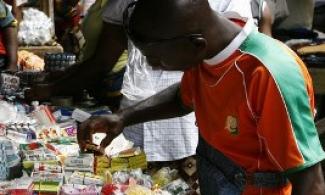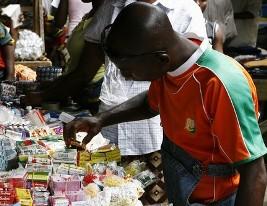
An estimated one in 10 medical products circulating in low and middle-income countries is either substandard or falsified, according to new research from the World Health Organization.
An estimated one in 10 medical products circulating in low and middle-income countries is either substandard or falsified, according to new research from the World Health Organization.
The finding means people are taking medicines that fail to treat or prevent disease.
Substandard or falsified products are a waste of money for individuals and companies that buy time, and they can also cause serious illness or even death.
“Substandard and falsified medicines particularly affect the most vulnerable communities,” says Dr. Tedros Adhanom Ghebreyesus, WHO Director-General.
“Imagine a mother who gives up food or other basic needs to pay for her child’s treatment, unaware that the medicines are substandard or falsified, and then that treatment causes her child to die. This is unacceptable. Countries have agreed on measures at the global level – it is time to translate them into tangible action.”
“The costs of poor-quality medicines span well beyond individual deaths and illness,” says Ronald Piervincenzi, chief executive at the non-profit USP.
“Substandard and falsified medicines contribute to the growing and costly threat of antimicrobial resistance that could cause 10 million deaths by 2050 and cost the world up to $100 trillion.”
Four years of fakes
WHO has received 1,500 reports on substandard and falsified products since 2013. That's the year Nigeria’s National Agency for Food and Drug Administration and Control (NAFDAC), seized 150,000 doses of falsified emergency contraceptives.
Antimalarials and antibiotics were the most reported—with 42% of the reports coming from Africa, a proportion equal to the reports coming from Asia and Europe combined.
The figure is suspected to be likely more, with many cases going unreported. A combined 16% of the reports came from the Western Pacific, the Eastern Mediterranean and South East Asia regions.
“Many of these products, like antibiotics, are vital for people’s survival and well-being,” says Dr. Mariângela Simão, Assistant Director-General for Access to Medicines, Vaccines, and Pharmaceuticals at WHO.
“Substandard or falsified medicines not only have a tragic impact on individual patients and their families, but also are a threat to antimicrobial resistance, adding to the worrying trend of medicines losing their power to treat.”
This is the first report since 2013 when the WHO began gathering data for a global surveillance and monitoring system.
Alongside the report, a separate research shows nearly 11% of all medical products used in low- and middle-income countries fail.
The study was based on more than 100 published research papers on medicine quality surveys done in 88 low- and middle-income countries involving 48,000 samples of medicines.
Data and threats
Inaccurate data only shows the scale of the problem and project the threat of substandard.
Using a modeling exercise developed by the University of Edinburgh, researchers estimate between 72,000 and 169,000 children may be dying each year from pneumonia due to substandard and falsified antibiotics.
A second model that was done by the London School of Hygiene and Tropical Medicine estimated that 116,000 additional deaths from malaria could be caused every year by substandard and falsified antimalarials in sub-Saharan Africa, with a cost of US$ 38.5 million to patients and health providers for further care due to a failure of treatment.
Substandard medical products reach patients when the tools and technical capacity to enforce quality standards in manufacturing, supply, and distribution are limited.
Falsified products, on the other hand, tend to circulate where inadequate regulation and governance are compounded by unethical practice by wholesalers, distributors, retailers and healthcare workers. A high proportion of cases reported to WHO occur in countries with constrained access to medical products.
Modern purchasing models such as online pharmacies can easily circumvent regulatory oversight.
These are especially popular in high-income countries, but more research is needed to determine the proportion and impact of sales of substandard or falsified medical products.
Globalization is making it harder to regulate medical products.
Many falsifiers manufacture and print packaging in different countries, shipping components to a final destination where they are assembled and distributed.
Sometimes, offshore companies and bank accounts have been used to facilitate the sale of falsified medicines.
“The bottom line is that this is a global problem,” says Dr. Simão.
“Countries need to assess the extent of the problem at home and cooperate regionally and globally to prevent the traffic of these products and improve detection and response.”
